Phil Riggan, Finding the ways we honor U.S. Presidents [sic] in Richmond, wordpress.com
image from entry [see below]
***
- George Washington has two statues at Capitol Square, the Lower Arch at the Pump House and a sculpture honoring his vision of the Kanawha Canal on Canal Walk;
- Thomas Jefferson has a statue in the lobby of the Jefferson Hotel and another is planned for inside the Capitol building;
- James Monroe and John Tyler are buried at President’s Circle at Hollywood Cemetery;
- Abraham Lincoln has a monument at Tredegar Iron Works.
For the Southerners, Jefferson Davis was the President of the Confederacy and has a monument on Monument Avenue and is buried at Hollywood Cemetery.
See more statues and monuments or check for where they are located on the Statues and Monuments page.
7FEB
Matthew Fontaine Maury on Monument Avenue
Posted by Phil Riggan in history, Richmond, statues. Tagged: Matthew Fontaine Maury, Monument Avenue, Richmond, statues. 12 comments
WHERE: Monument and Belmont avenues in the intersection.
ARTIST: William F. Sievers
DEDICATION: November 11, 1929
 DESCRIPTION: A seated bronze figure of Maury which is 8 foot high on a 5 foot high granite pedestal. This grouping sits in front of a 18 foot high base which supports a 9 foot diameter bronze globe. At the base of the globe a storm is raging with figures being tossed by a swirling wave. This carefully conceived allegorical theme is a tribute to Maury’s study of the ocean, winds and currents.
DESCRIPTION: A seated bronze figure of Maury which is 8 foot high on a 5 foot high granite pedestal. This grouping sits in front of a 18 foot high base which supports a 9 foot diameter bronze globe. At the base of the globe a storm is raging with figures being tossed by a swirling wave. This carefully conceived allegorical theme is a tribute to Maury’s study of the ocean, winds and currents.
* * *
Confederate naval officer and explorer Matthew Fontaine Maury was known as the “Pathfinder of the Seas.” Although he never fought a battle and was prone to seasickness, Maury became one of the U.S. Navy’s most accomplished officers.
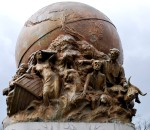 The enigmatic nature of his statue reflects his unusual place in the pantheon of Confederate and Virginia heroes. The carefully conceived allegorical theme is a tribute to Maury’s study of the ocean, winds and currents. It was dedicated November 11, 1929, and rests in the intersection with Belmont Avenue. Maury’s grave can be found in President’s Circle at Hollywood Cemetery.
The enigmatic nature of his statue reflects his unusual place in the pantheon of Confederate and Virginia heroes. The carefully conceived allegorical theme is a tribute to Maury’s study of the ocean, winds and currents. It was dedicated November 11, 1929, and rests in the intersection with Belmont Avenue. Maury’s grave can be found in President’s Circle at Hollywood Cemetery.
12MAR
Why Major Lewis Ginter deserves a statue in Richmond
Posted by Phil Riggan in history, Richmond, statues. Tagged: A.P. Hill, Arthur Ashe, Civil War, history, Lewis Ginter, Monument Avenue, Northside, Richmond, statues. 3 comments
Major Lewis Ginter is one of the most important figures in the development of Richmond and left a large imprint on our city. I’ve written about his many accomplishments and lasting achievements, but I want to go a step further.
We should erect a statue of Ginter in Richmond. With statues to honor so many great figures in Richmond’s history, why is there no statue to the man I consider the “Greatest Richmonder of All Time?”
We have a statue of Joseph Stewart Bryan — a contemporary and good friend of Ginter’s — in Richmond’s Monroe Park, dedicated in 1911 [see more on the statue]. A list of Ginter’s accomplishments and philanthropy would be much longer than one for Bryan. But why nothing for Ginter?
There are indications that he may not have wanted to be honored. The famed Jefferson Hotel opened in 1895 and has been a perennial five-star historic gem ever since [Read more]. In the book Richmond: The Story of a City by Virginius Dabney:
Leading citizens sought to place a plaque in the hotel, celebrating the all-important contributions of Major Ginter in bringing the Jefferson into existence, but the modest man refused to allow it.
Ginter was known to be very private. He never married and left his inheritance to his niece, Grace Arents, and many other charitable organizations. There are few photos of him available and he likely wanted it that way. I’ve read in various books that he may have instructed someone to destroy most of his financial and personal records.
Despite his wishes for privacy, I think the city should celebrate him with a statue. That’s what we do in Richmond. Ignoring cost for a moment, I have three locations to nominate.
Intersection of Laburnum Avenue and Brook Road [map]
This is perhaps the most appropriate spot, as Ginter in the mid-1880s bought controlling interest in much of then-named Brook Turnpike and bought 100s of acres on either side of the road in preparation for his visionary Northside development that evolved into today’s Ginter Park, Sherwood Park and Bellevue.
He eventually ran streetcars along Brook Road as well, turning at this intersection on to Fauquier Avenue toward his progressive recreational development Lakeside Park in the 1890s — now known as Jefferson-Lakeside Country Club.
Another good reason to place his statue there is the parallel with the General A.P. Hill statue at Laburnum Avenue and Hermitage Road. Ginter served under Hill in the Civil War, according to Lewis Ginter Botanical Garden: 25 Years and Growing by Frank L. Robinson and Lynn Kirk:
Declining a promotion to brigadier, Ginter accepted the rank of major under General A.P. Hill, and for the remainder of his life he was addressed as Major Ginter … [Ginter] donated land and was instrumental in the construction of the monument.
The problem a statue at this unique five-way intersection is that it is too busy and there are too many cars needing to take left turns. Getting traffic around even a small circle would be difficult. The intersection could be widened, but it is not logical to spend the amount of money for the potential of creating a dangerous intersection.
Intersection of Brookland Parkway, Loxley Road and Rennie Avenue [map]
This might be my favorite, just because it seems like the easiest and safest place to establish a lasting monument to Ginter without interrupting current traffic patterns.
This intersection is part of Sherwood Park and is already in the shape of two triangles. There is plenty of room to establish two small triangle-shaped landscaped gardens within the intersection, perhaps with a statue to Ginter in one of them. No matter what, this intersection needs a more appropriate and distinguished layout.
Intersection of Hermitage Road and Bellevue & Pope avenues [map]
This seems like the least likely but is appropriate because of the train that Ginter ran through this area toward the quarries in the area that became Bryan Park and Lakeside.
Also, it would be a shame to take attention away from the arch at Pope Avenue. Hermitage Avenue itself is a historic district and would likely have some say in any adjustments to the roadway at this five-way intersection.
* * *
Cost? Let’s use Richmond’s statue honoring tennis champion and Richmond native Arthur Ashe as a comparison.
Ashe is honored with a 12 foot tall bronze statue at Monument Avenue and Roseneath Road that stands on a 87,000 pound granite block and rises 28 feet above the street. It was created by artist Paul Di Pasquale and was dedicated in July 1996 with a cost of nearly $450,000 (according to figures from the Richmond Times-Dispatch).
Let’s assume that a more modest statue to Ginter would cost $500,000, considering inflation, but not including the cost to adjust traffic patterns at the selected intersection. Fund-raising would not be easy — a group or a philanthropist would have to back the long-overdue statue.
There was a period in the late 1800s to early 1900s when there were many statues and monuments erected: General Robert E. Lee, 1890; General Williams Carter Wickham in 1891; Howitzers monument and General A.P. Hill in 1892; Confederate Soldiers and Sailors monumentin 1894; at Capitol Square, Dr. Hunter Holms McGuire in 1904 and Gov. William “Extra Billy” Smith in 1906; and on Monument Avenue, Major General J.E.B. Stuart and Jefferson Davis in 1907.
Ginter died October 1, 1897. With all of his success and philanthropy — and considering the propensity to honor great Richmonders with statues — there must have been movement at that time to honor Ginter that fell short. His friend Bryan was honored in 1911 after his death in 1908, and maybe by then people had begun to forget his accomplishments? Major Lewis Ginter’s name should have been the 10th on the list.
26FEB
Jefferson Davis on Monument Avenue
Posted by Phil Riggan in Civil War, history, Richmond, statues. Tagged: Civil War, history, Jefferson Davis, Monument Avenue, Richmond, statues. 5 comments
WHERE: Monument and Davis avenues, in the center of the intersection.
ARTIST: Edward V. Valentine.
DEDICATION: June 3, 1907.
DESCRIPTION: A 7 1/2 foot high standing figure of bronze atop a 12 foot granite pedestal. This grouping stands in front of a 67 foot high column on top of which is another Valentine sculpted allegorical figure of the South “Vindicatrix.” The column stands in front center of a semi-circle classical colonnade of 13 Doric columns. William C. Noland of Richmond designed the entire monument.
22JAN
J.E.B. Stuart on Monument Avenue
Posted by Phil Riggan in Civil War, history, Richmond, statues. Tagged: Civil War, JEB Stuart, Monument Avenue, Richmond, statues. 4 comments
WHERE: Monument and Lombardy avenues in the Fan District, in the center of the intersection.
ARTIST: Fred Moynihan.
DEDICATION: May 30, 1907.
DESCRIPTION: A 15-foot-tall equestrian bronze statue mounted on a 7 1/2 half foot granite pedestal. The statue faces north and is the most animated of the Monument Avenue statues. The horse’s right foot is raised and Stuart is portrayed turned in the saddle to face east. It was unveiled by Virginia Stuart Waller, the general’s granddaughter.
Confederate General James Ewell Brown “J.E.B.” Stuart was major general — chief of cavalry — in the Army of Northern Virginia, Confederate States of America.
While he cultivated a cavalier image, his serious work made him the eyes and ears of Robert E. Lee’s army and inspired Southern morale.
He was mortally wounded at the Battle of Yellow Tavern in 1864 and died in Richmond just a few blocks away from where his monument is located at the intersection with Lombardy Street.
* * *
I’ve often heard the complaint from visitors and tourists what a shame it is that Stuart’s statue is facing the direction it is facing. Monument Avenue officially begins at this intersection. As the traffic heads east, the street becomes into Franklin Street and is one-way. That makes it tougher to drive by the monument and get a good look at Stuart, especially for tour buses. Traffic through the intersection also makes it tough to safely cross the street to get a closer look at the statue.
No matter. I’ve always enjoyed the confines in Stuart Circle. The intersection is the most busy, architecturally speaking. The statue came first, but then came First English Lutheran Church (1911), St. John’s United Church of Christ (1928), Grace Covenant Presbyterian (1920-23) — and on opposite corners, the old Stuart Circle Hospital (now apartments) and the attractive high-rise Stuart Court Apartments.
15JAN
General Robert E. Lee’s statue on Monument Avenue
Posted by Phil Riggan in Civil War, history, Richmond, statues. Tagged: Civil War, George Washington, history, Monument Avenue, Richmond, Robert E. Lee, statues, tourism, travel, Virginia. 14 comments
WHERE: Monument and Allen avenues in the center of a grass island in the roundabout.
ARTIST: Jean Antoine Mercie.
DEDICATION: May 29, 1890.
DESCRIPTION: A grand and imposing equestrian bronze figure 21 foot high, mounted on an oval-shaped granite pedestal 40 foot high, which is flanked on both sides by two gray marble columns. The statue is oriented to the south and was the first constructed on Monument Avenue. The traffic flows around this monument in a roundabout, starting in 2004.
* * *
This monument is the one that draws the most “Wows” of all the Monument Avenue statues from first-time visitors. It is the biggest, tallest and most imposing statue of all in Richmond — even bigger than the George Washington equestrian statue at Capitol Square [JB highlight].
The traffic circle is wide and the inside has grass, so it is also the most approachable monument on the avenue. People can sit in the circle and watch traffic, catch sun rays and just hang out with General Lee. There rarely is a bad time of day to photograph the statue as well, as he is facing south and even in the winter, if the sun is shining, it will be on his face instead of his horse Traveller’s backside.
HISTORY: Lee graduated from West Point Military Academy. He became a Captain in the Mexican American War. He had also served as a superintendent at West Point. There he was responsible for training future soldiers.
Based on his military accomplishments, he was asked by President Abraham Lincoln to lead the Union army. Lee turned down the position due to his loyalty to Virginia. Lee traveled to Richmond in 1861 to accept charge of the Army of Northern Virginia. He later served as a military advisor to Jefferson Davis, President of the Confederate States of America.
Based on his military accomplishments, he was asked by President Abraham Lincoln to lead the Union army. Lee turned down the position due to his loyalty to Virginia. Lee traveled to Richmond in 1861 to accept charge of the Army of Northern Virginia. He later served as a military advisor to Jefferson Davis, President of the Confederate States of America.
Confederate General Robert E. Lee showed his skill of organization as he prepared 40,000 troops for battle. His men held him in high respect and obediently carried through his orders. Lee’s greatest battles included the battles of Antietam, Chancellorsville, Fredericksburg, and Gettysburg.
On the afternoon of April 9, 1865, Lee surrendered to General Grant of the Union army at Appomattox Court House, marking the end of the Civil War.
After the war Lee became the president of Washington College, which is now called Washington and Lee University. On October 12, 1870 at age 63, Lee passed away at Washington and Lee. He is buried under Lee Chapel there.
Lee’s horse, Traveller, became well-known as he carried Lee throughout the Civil War. The horse died in June 1871 from stepping on a rusty nail.
13JAN
Arthur Ashe statue on Monument Avenue
Posted by Phil Riggan in black history, Richmond, statues. Tagged: Arthur Ashe, black history, Byrd Park, Monument Avenue, Paul DiPasquale, Richmond, statues, Stonewall Jackson, tourism. 10 comments
Richmond native, tennis champion and humanitarian Arthur Ashe was the first African-American male to win a Grand Slam event and was an active civil rights supporter. He is honored with a statue on Monument Avenue in Richmond, Virginia. [slideshow]
ARTIST: Paul Di Pasquale.
DEDICATION: July 10, 1996 (it would have been his 53rd birthday).
DESCRIPTION: The bronze statue of Arthur Ashe faces west with four children facing east. The statue shows him holding books in his left hand and a tennis racket in his right hand to illustrate how he encouraged the importance of sports and education. The 12 foot bronze statue (the figure is 10 foot tall, 12 foot to the books in his left hand) stands on a 87,000 pound granite block quarried in Georgia. The monument rises 28 feet above the street.
* * *
There was plenty of controversy over this statue when it was proposed and after it was placed at Monument and Roseneath avenues back in July 1996. Questions like:
- Should it be on Monument Avenue with all the Confederate heroes?
- Should there be more design options?
- Is the base too big for the statue?
- Is he about to hit the kids with the books and the racquet?
Personally, I don’t think it is the best statue in Richmond. That’s no slight to Mr. Ashe, who was and still is a hero to so many people worldwide. The message in the statue is a good one, and true to his legacy. He’s kept a smile over on Monument Avenue.
Who remembers that then Mayor Leonidas Young had a proposal to place the monument in Byrd Park and rename the Boulevard for Arthur Ashe? Definitely, there were some that thought his statue belonged in Byrd Park, home of some of his tennis-playing days as a Richmond youth.
One article in the Richmond Times-Dispatch noted a suggestion from a city council member to move the Stonewall Jackson monument to make way for Ashe, calling the intersection of Monument Avenue and Boulevard “the most primary piece of property in the city.” I’ve written that it is the most trafficked and therefore most visible on Monument Avenue.
The article also noted that the entire Ashe family favored the site at Monument Avenue and Roseneath Road — and that Arthur would not have approved of the debate over the location for the statue.
How else has Richmond honored Ashe? Have you ever seen the Arthur Ashe Center? I’ve never liked the building, and I’m not alone.
One day Richmond will tear that down and build a more adequate and modern facility to replace it. There have been proposals, mostly tied in with revamping The Boulevard corridor and The Diamond, located on the same property. I hope that if it gets Ashe’s name, it will at least be worthy of his world-class status.


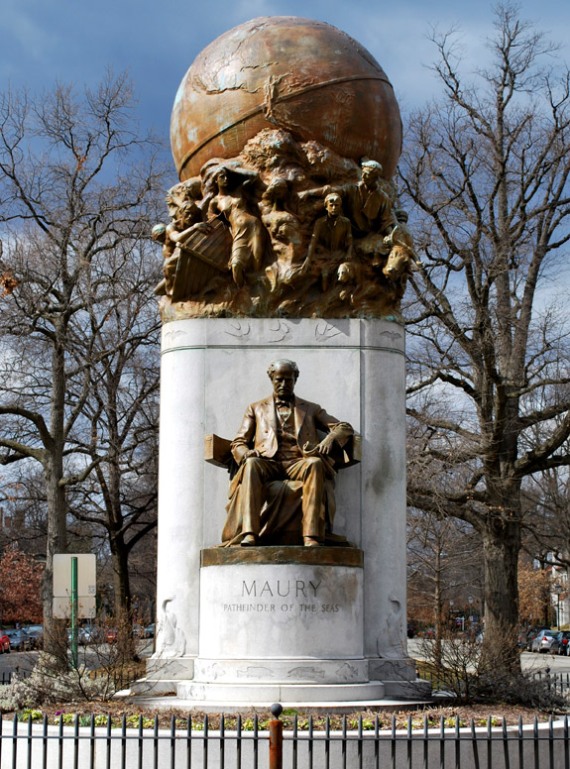
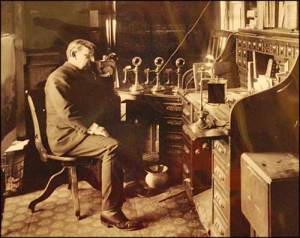
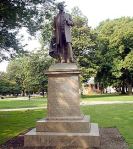



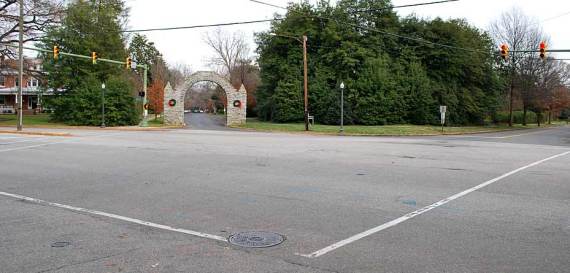


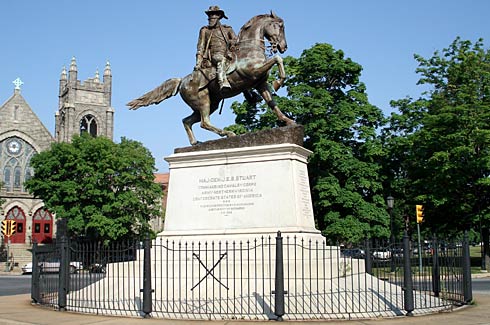

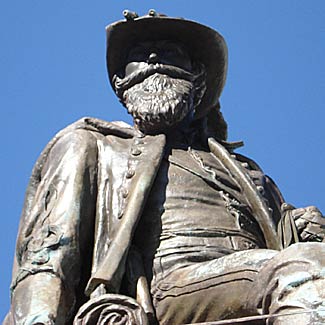





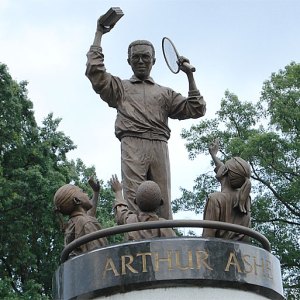
No comments:
Post a Comment